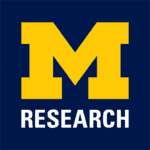Single Cells, Big Impact: How MIDAS Seed Funding Catalyzed a Research Revolution at U-M
By Justin Varney, Michigan Institute for Data and AI in Society
A $1.25 million seed investment from the Michigan Institute for Data and AI in Society (MIDAS) in 2017 sparked a transformative era of single-cell biology research at the University of Michigan.
That early “Challenge Grant” did more than launch a handful of science projects – it jumpstarted an ecosystem, ultimately attracting more than $30 million in external research funding and $7 million in internal support from the U-M Biosciences Initiative.
“Michigan has many investigators working in the trenches who are appreciative that our leaders decided to be among the first wave,” said June Li, a former U-M professor of human genetics and bioinformatics who led the initial MIDAS Challenge project. Li is now the chair of molecular genetics and genome sciences at the University of Oklahoma Health Sciences Center.
“If we have the culture to work closely together—where biologists, technologists, and computational biologists can form partnerships—then funding can further jumpstart this interaction,” he said.
Single-cell biology has revolutionized how scientists study health and disease. Where researchers once averaged signals across large tissue samples, new technologies allow them to isolate and analyze individual cells, uncovering critical differences in immune responses, cancer development, and organ formation.
That early MIDAS funding did more than support experiments; it fostered a new culture of collaboration.
“We are so proud that MIDAS supported such important work to set up the foundation of an important field of science,” said Dr. H. V. Jagadish, director of MIDAS and professor of computer science and engineering. “The single-cell biology team had the vision and expertise to address a number of fundamental conceptual and technical challenges and their pioneering work paved the way for many other research teams to address key biomedical research questions.”
That foundation has continued to grow as new technologies evolve.
“This single-cell research effort exemplifies how MIDAS can support high-impact teams from across the university to drive breakthroughs that create lasting scientific and societal impact,” said Jing Liu, executive director of MIDAS.“We expect that the advancement of AI will enable many types of scientific inquiry that are previously unfathomable with research efforts at a much larger scale. MIDAS is here to help U-M capitalize on such opportunities.”
One clear outcome of this collaborative approach: the MIDAS-funded Michigan Center for Single-Cell Genomic Data Analytics expanded to become the Biosciences Initiative Single-Cell Spatial Analysis program.
These numbers show the powerful ripple effect of early investment—and how one MIDAS seed grant helped transform U-M into a national leader in single-cell research.
$1.25 million
In MIDAS seed funding catalyzed this effort
$7 million
In internal support from U-M Biosciences Initiative
$30+ million
In external grants leveraged
40+
Labs and research teams engaged in single-cell research
Multiple
National awards and groundbreaking clinical advances
Today, dozens of labs across U-M, from biomedical engineering to clinical sciences, have adopted single-cell methods. In 2024 alone, two researchers in the field received the university’s Mid-Career Biosciences Initiative Faculty Award.
“These teams work at the intersection of biology and computation,” said Li. “It has been tremendously helpful for both the science and for the personal growth of the researchers involved. MIDAS allowed me to help build a community of scientists who work together, not alone.”
U-M’s leadership in single-cell analysis has already produced tangible impact. U-M scientists have used single-cell techniques to identify novel immune cell subtypes in rare cancers, decode early developmental disorders and develop synthetic models such as artificial ovaries – scientific advances now attracting national attention.
The data challenges inherent in single-cell research, such as massive datasets, high noise and sparsity, have also pushed the boundaries of algorithm development, with applications well beyond biology, from patient care to social network analysis.
Looking ahead, Li sees the rise of artificial intelligence, especially generative AI, as a new frontier for discovery and collaboration.
“I’m very excited about the application of AI, especially this newer wave of generative AI,” he said. “It offers the promise of synthesizing and interpreting data better than ever before, and may even help unify the ‘languages’ across scientific disciplines.”
